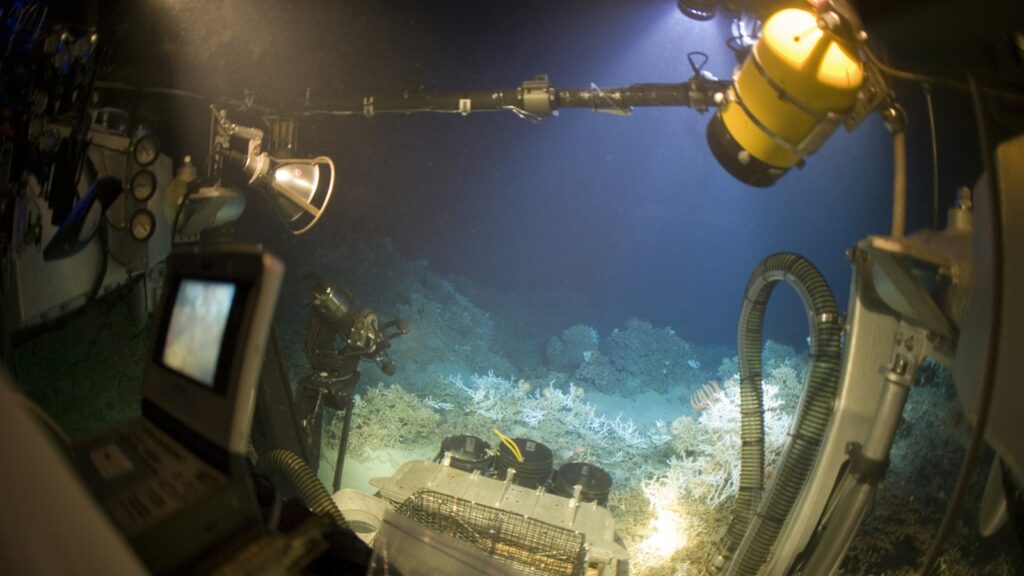In June 2023, five lives were lost when the OceanGate Titan submersible imploded during its descent to the Titanic wreck site. Now, a report released by the US Coast Guard Marine Board of Investigation (MBI) finds the company’s toxic leadership was a contributing factor to this preventable disaster.
The 335-page report exposes how destructive leadership patterns – prioritising profits over safety, silencing dissenting voices, and creating environments where fatal risks go unchallenged – can have devastating consequences.
Yet these same toxic patterns exist in workplaces everywhere. Toxic leadership and gaslighting don’t just damage morale or productivity. They create psychological harm, commercial losses, and in extreme cases, genuine danger.
But what does toxic leadership actually look like in practice? How do you recognise when manipulation is shaping your workplace culture? And what steps can employers take to create healthier, safer environments? Let’s explore…
What is the difference between toxic leadership and gaslighting?
Toxic leadership creates an environment of control, fear and distrust, where leaders micromanage, provide inconsistent feedback and manipulate emotionally. These individuals undermine their teams and foster a climate of uncertainty, disengagement and burnout.
Gaslighting is a manipulation tactic that causes individuals to question their reality, memory or perceptions, destabilising teams by distorting facts and contradicting events. Toxic leaders use gaslighting strategically to control narratives, undermine self-esteem and maintain power. They do so to ensure decisions and opinions go uncontested, leading to confusion, uncertainty and decreased productivity.
How do toxic behaviours show up in reality?
Toxic leadership is widely discussed, but often lacks practical detail. These examples illustrate what it looks like in action.
Example: The iron fist
Sophie’s new boss, Lisa, used unpredictable and manipulative leadership tactics. One moment, Sophie was praised for her work and the next, she was criticised for the same efforts.
Lisa made decisions behind Sophie’s back, leaving her feeling excluded. When Sophie raised concerns, Lisa dismissed them, minimising her worries and making Sophie feel as though she were overreacting.
Over time, Lisa withheld important information and reassigned Sophie’s responsibilities without explanation, undermining her confidence.
This behaviour exemplifies narcissistic leadership, where Lisa’s need for control and dominance supersedes Sophie’s needs and wellbeing.
Example: Poison ivy
Samantha was a master of manipulation, subtly undermining colleagues through vague statements, contradictory feedback and by withholding information. She positioned herself as a trusted advisor while speaking ill of others behind their backs and sabotaging projects.
By positioning herself in front of decision-makers, she manipulated her way into high-profile projects, leaving others behind.
Much like the Poison Ivy plant, this behaviour reflects how toxic colleagues like Samantha can create an unhealthily competitive environment and slowly poison the trust and productivity of a team.
What’s the impact of toxic leadership and gaslighting on the brain?
Toxic leadership and gaslighting trigger continuous stress and threat responses in the brain, which can lead to poor performance, mental health and burnout.
Stress and brain functioning
Heightened stress increases cortisol and activates the brain’s ‘fight or flight’ threat responses. The prefrontal cortex becomes compromised, impairing decision-making, problem-solving, creativity, collaboration and emotional regulation.
Burnout
Gaslighting and abusive leadership can have a pervasive psychological toll causing increased employee burnout from emotional exhaustion, anxiety and depression.
Team dynamics
There are five key social domains that demand leaders’ attention: Status, Certainty, Autonomy, Relatedness and Fairness (SCARF). Violations relating to these domains, such as favouritism or exclusion, mean we perceive social threats in the same way as physical danger, driving fear and corroding relationships.
Culture
Toxic leadership behaviours often stem from unconscious patterns and poor emotional regulation in leaders themselves. This leads to maladaptive stress responses in employees, reducing trust, collaboration and psychological safety, thereby perpetuating toxic cultures.
The commercial case for change
Toxic leadership and gaslighting are not isolated phenomena. They cost organisations c.$12,000 per employee annually and negatively impact the business as a whole through:
- Reduced engagement, productivity and performance: Studies report a direct link between toxic leadership and increased absenteeism, higher turnover and decreased productivity, resulting in substantial hidden costs for organisations.
- Impact on morale and retention: A workplace culture where gaslighting persists is characterised by low morale, internal conflict and high turnover, creating substantial costs in lost institutional knowledge and recruitment.
- Erosion of innovation, collaboration and communication: Victims of gaslighting are less likely to speak up, propose ideas or collaborate. This stifles innovation and problem-solving capabilities that drive organisational growth.
- Legal and financial costs: Organisations with toxic leaders face higher risks of costly lawsuits, negative publicity and brand damage, directly affecting financial outcomes and stakeholder trust.
- High turnover and talent drain: Toxic workplaces erode loyalty, experience high turnover and struggle to attract new talent, raising recruitment and training costs and threatening long-term business continuity.
How to overcome toxic leadership and gaslighting
If organisations fail to confront toxic leadership and gaslighting – as was the case at OceanGate – they risk not only devastating employee wellbeing but also the long-term viability of the business.
Organisations must recognise the signs, understand their neurological and commercial impact and foster an environment of transparency, accountability and trust to break the cycle of manipulation and toxicity.
Strategies for employers:
- Transparent communication and employee empowerment: Implement a 360-degree feedback system to foster open dialogue and ensure clear, written summaries of performance expectations. This empowers employees to raise concerns, while encouraging leadership transparency and growth.
- Leadership accountability: Develop and enforce a zero-tolerance policy against toxic behaviours, supported by regular leadership audits. This helps to consistently identify and address manipulative actions and improve whistleblower protection.
- Trust and psychological safety: Introduce third-party audits to assess leadership effectiveness objectively. Alongside this offer mental health and wellbeing support programmes to help employees manage stress, disengagement and toxic work environments.
Strategies for employees:
- Trust your perceptions: If something feels wrong, trust your instincts and seek clarification from trusted leaders, colleagues or a mentor.
- Document interactions: Keep records of communications and meetings, particularly when encountering contradictory statements or unreasonable demands.
- Seek support: Reach out to HR, a coach or counsellor for guidance and support in navigating toxic work environments.
Learning from OceanGate’s tragedy
The OceanGate tragedy serves as a stark reminder that toxic leadership isn’t just a workplace inconvenience – it can have devastating real-world consequences. While most organisations won’t face life-or-death decisions, the same cultural failures that contributed to those five deaths exist in workplaces everywhere.
The future of work demands environments where employees can raise concerns without fear, where diverse voices are heard, and where psychological safety enables people to challenge dangerous decisions.






